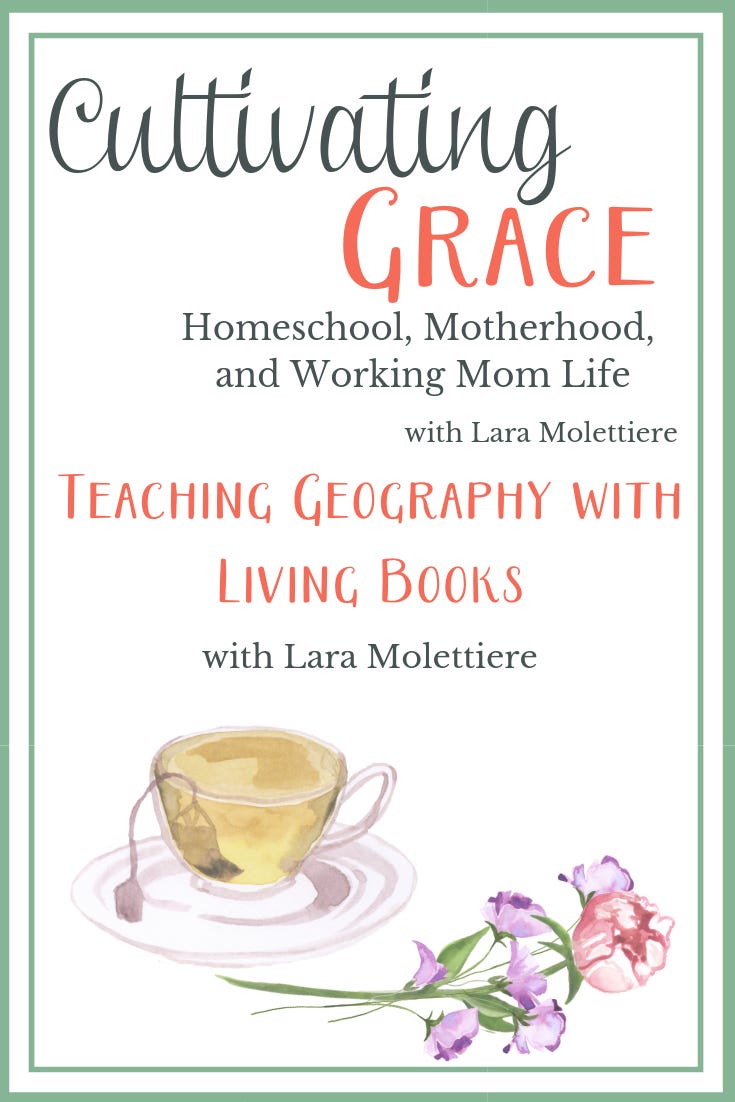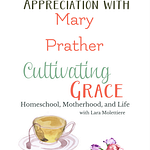Teaching Geography with Living Books
Hello there, friends. Today, I want to talk to you about covering geography in your Morning Time.
Now, I will be the first to admit I used to think geography was probably the most boring thing in the world and I don't remember really covering geography very thoroughly in any specific grade. I just remember always going, "Oh, here it comes," and that's really sort of sad because there's all these wonderful things that you can learn when you study geography, and it's not just about the cultures of the places, but you can look at their geography and you can see why certain things are part of that culture and why other things are not.
The study of geography brings remote parts of the world to life in the minds of our children and ourselves.
I am grateful to be of service and bring you quality homeschool and homemaking content. I receive compensation through subscribers, curriculum sales, and affiliate links. As an Amazon Associate I earn from qualifying purchases.
One of the ways that we really enjoy covering geography in our Morning Time is through living books. Our current study is a Holling C. Holling book called Seabird and it's about this wonderful carved bird that goes through generations and generations of a family. It takes you all across the world on different ships with all the different generations of the sailors in this family. It is just amazing when your children learn geography and they have a story to go with it, because story is really how things are taught.
Throughout history, people have used story to convey history, to convey events, to explain things, to keep their culture alive, and through story, we are able to connect with other people. Where you might look at someone and you don't really see anything in common with them, you can still relate to that person because you remember a story about someone who was like them and you remember feeling empathy, and you remember feeling connection. The power of story is just remarkable. When we apply that to helping our children learn, the results are simply stunning.
I'd like to share with you a small passage out of our book that we have been studying because it is simply beautiful. When your children learn things like this from stories, it really becomes kind of an integrated part of their personality and of their desire to continue learning is sparked by little gems like this.
This is Ezra at 105 years old who is the original carver of Seabird and his great grandson, Ken. Ken speaks to Ezra and he says,
"You do think she's a beautiful ship, don't you, Captain Ezra?"
"Aye boy, a thing of beauty and excitement. Old ships go and new ships come bigger and better. This floating city now, at least she's bigger, but why? Just so restless tourists can eat too much, dance all night aboard, and say they've seen the world, but they'll be too busy gossiping to even look at India."
"Oh, I'll look at India, sir," said Ken quickly, "When Seabird and I sail with daddy will look very specially at India."
"Aye, you'll see things," chuckled Ezra. "Right now, see that plane yonder? There's a ship of the future. All of us who have had Seabird have longed to fly. Someday Ken, you'll ride in great ships across the sky. Take care that you never forget the first feeling of awe and wonder flying through space.
"People are puzzled why I feel young at five years beyond a century. Maybe it started in the freedom I felt one day at a masthead. I felt that I was lifted upward, floating in the sky. Folks say it was only a goal I saw there in the storm. Aye, but somehow it's magic got bottled up in Seabird and long after I'm gone, she will still be shaping people and things. She'll still be soaring."
When we fill our children with the wonder of geography and the amazingness of this created world, we are setting them up for the same kind of wonder and awe everywhere they go throughout their entire lives.
Teaching geography allows us to help our children view the world with more wonder, and really, with today's society the way that it is, who doesn't need more wonder?
There is this beauty in teaching geography through living books that allows the story to really penetrate into the minds of our children. They become engrossed in the story, and they remember the points and the parts, and they remember talking about the different parts of the world.
When you see that part of the world come up again in another book, they'll come back and they'll remember, "Oh, that was in Seabird. That was when they went around the horn and the seas were really rough." Or, "That's the area of the sea where the doldrums are. That's where there was not good wind for sailing." It's just amazing to see them make these connections themselves.
And so, I would encourage you to definitely include geography in your homeschool studies and especially in your Morning Time, having small snippets of these living books to read during the together time where your whole family is there. It's just so joyful, and it's just full of wonder, and it's a great way to connect with your children, but to also help them connect to the world around them and the greater globe.
Living Geography Books
Hungry Planet What the World Eats
Material World A Global Family Portrait
The Glorious Adventure: Richard Halliburton's second book details how he set out to follow in the path of Ulysses, as described in the Odyssey.
The Complete Book of Marvels (Halliburton): Replete with historical facts, maps, and a treasure trove of unique restored photographs of both well-known and hidden wonders, Halliburton journeys with the reader by his side to reveal the beauty and mystery of the world's greatest sights as if for the very first time.
Atlas of the Bible - an excellent aid for Bible study and historical geography
















Share this post